One easy way to provide some extra TLC to your succulents is by using Epsom salt as a fertilizer. But, is Epsom salt good for succulents? In this comprehensive guide, we will discuss the benefits of it, how to use it, and address common questions about its application.
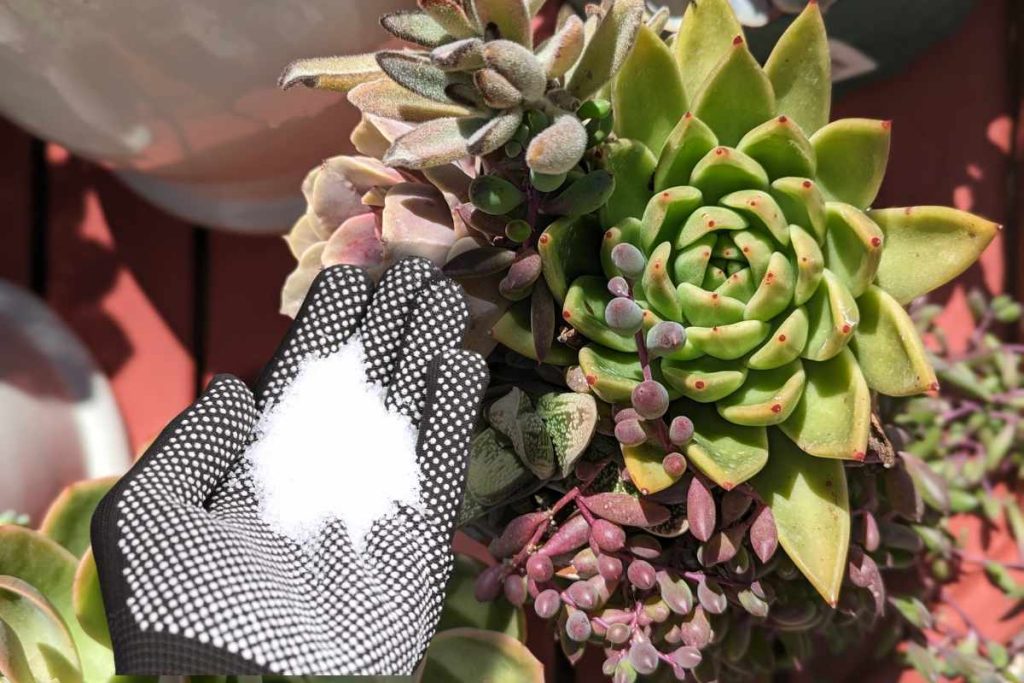
Dig in!
Is Epsom Salt Good for Succulents?
Epsom salt is a natural mineral compound containing magnesium and sulfate, which are essential nutrients for plant growth. Here are some benefits of using it for succulents:
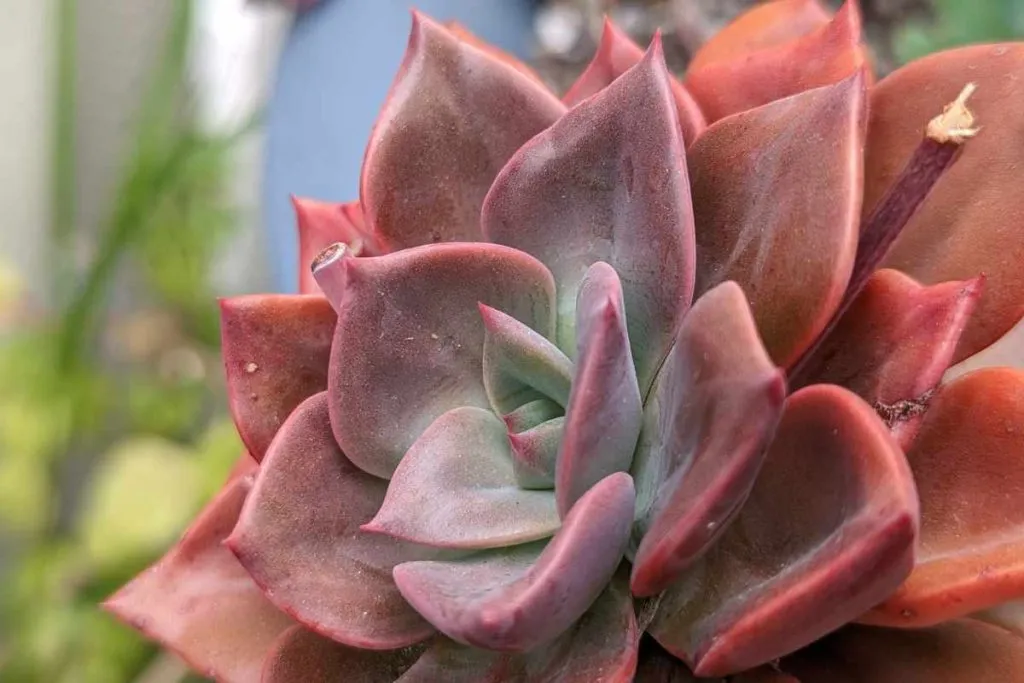
It Encourages Bright Beautiful Blooms
Epsom salt can help promote flowering in your succulents. Magnesium boosts the production of chlorophyll, which helps plants absorb sunlight more efficiently, leading to better, stronger growth and robust blooming.
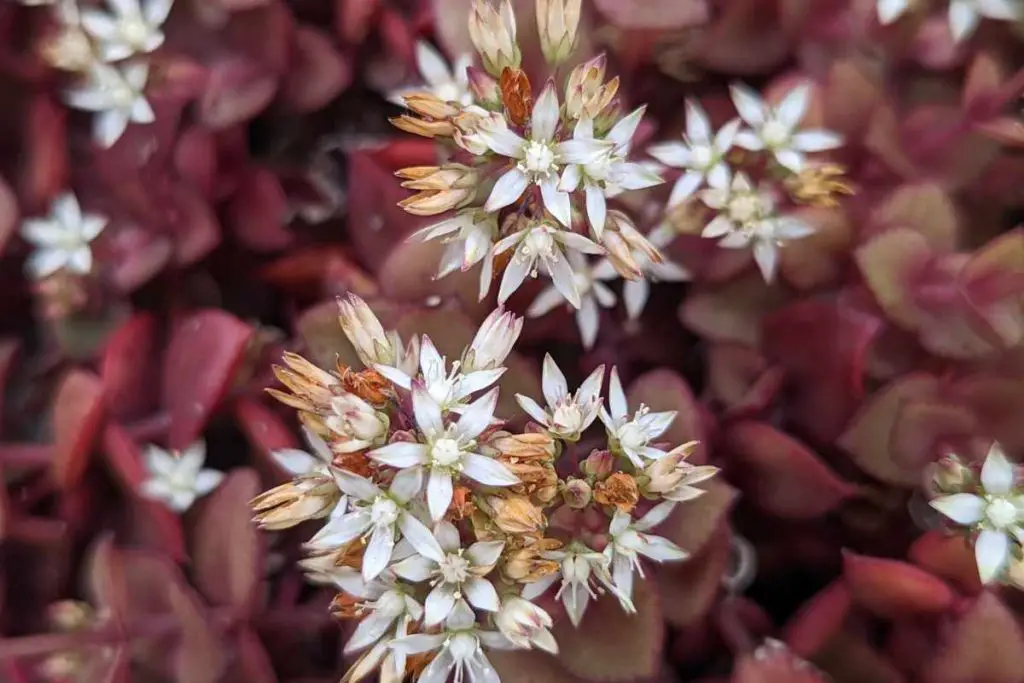
Chlorophyll Production
Epsom salt can give your succulents a vibrant, healthy appearance by enhancing their green color. Magnesium helps create chlorophyll, which is responsible for the green pigment in plants.
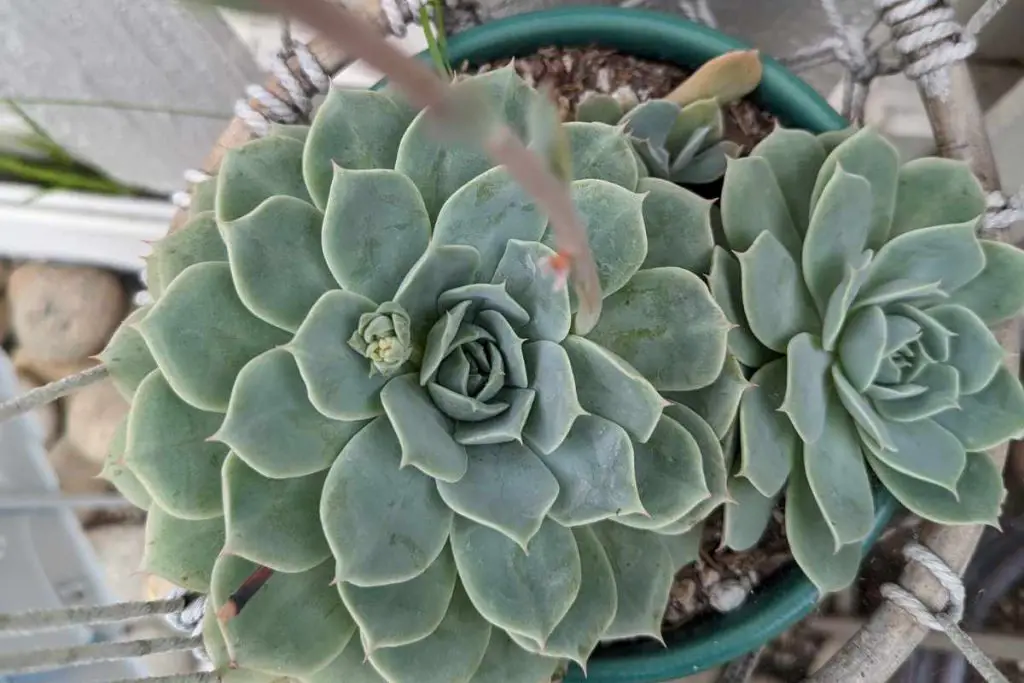
Addresses Nutrient Deficiencies
Magnesium and sulfur deficiencies can cause various problems in succulents, such as leaf yellowing, poor growth, and weak root systems. Epsom salt can help overcome these deficiencies, leading to healthier plants.

Neutralizes Soil pH
Epsom salt can help improve your succulents’ soil structure by neutralizing the pH if you find that your soil is imbalanced, allowing for better nutrient absorption.
How to Use Epsom Salt for Succulents?
In Potted Succulents
Using it for potted succulents can be beneficial since the soil in pots can be easily depleted of nutrients over time, but it’s essential to use it correctly. Overuse can lead to salt buildup in the soil and harm your plants. To avoid this, dissolve one tablespoon of salt in one gallon of water and use it to water your potted succulents once a month.

Things to Consider Before Using Epsom Salt
Before using it on your succulents, consider the following:
- Assess your succulents’ health and determine if they show signs of nutrient deficiency or need a boost in growth. If your succulents don’t have any nutrient deficiencies, then you probably shouldn’t change a thing with your maintenance routine.
- Ensure that your succulents have well-draining soil to avoid salt buildup and root rot. The roots are designed to take in exactly what they need and really don’t like it when the soil is wet for longer than it needs to be.
- Test the pH of your soil to determine if it needs adjustment.
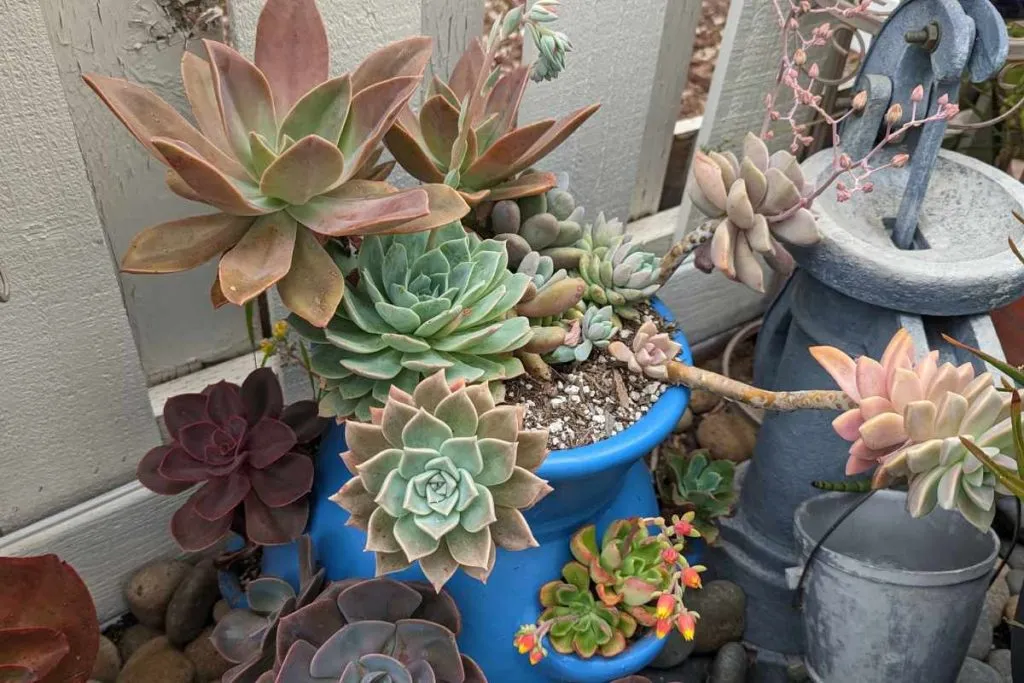
FAQs
Can I sprinkle Epsom salt around succulents?
Yes, you can sprinkle it around succulents. However, it’s best to dissolve it in water and use it as a liquid fertilizer to ensure even distribution and prevent salt buildup. Sprinkling it around on the top of the soil will cause it to be concentrated in one spot and sparse in another.

What succulents should you not use it on?
Succulents with naturally low magnesium requirements, such as some cacti, may not benefit from Epsom salt applications. Always research the specific needs of your plants before using any fertilizer. Gradually introduce it to your succulents if you’re just starting out. You can always add more if needed.
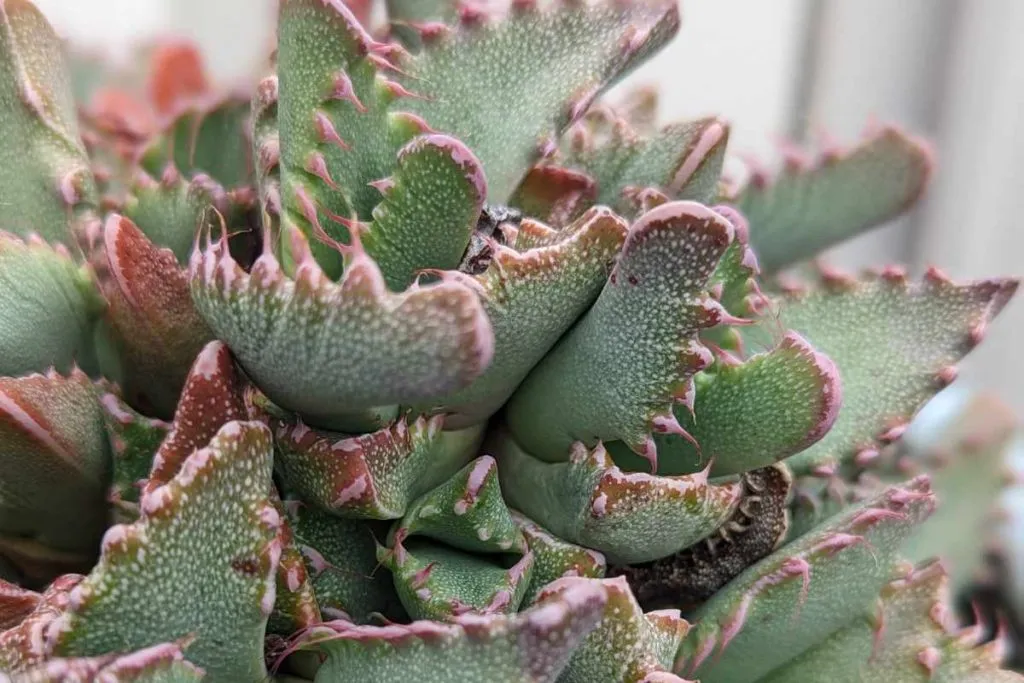
Is it even good for cactus plants?
Epsom salt can be beneficial for some cacti, especially those with magnesium deficiencies. However, it’s crucial to use it sparingly and only when necessary, as overuse can harm the plants. Cacti, especially, are used to nutrient poor soil so any fertilization at all may be overkill.
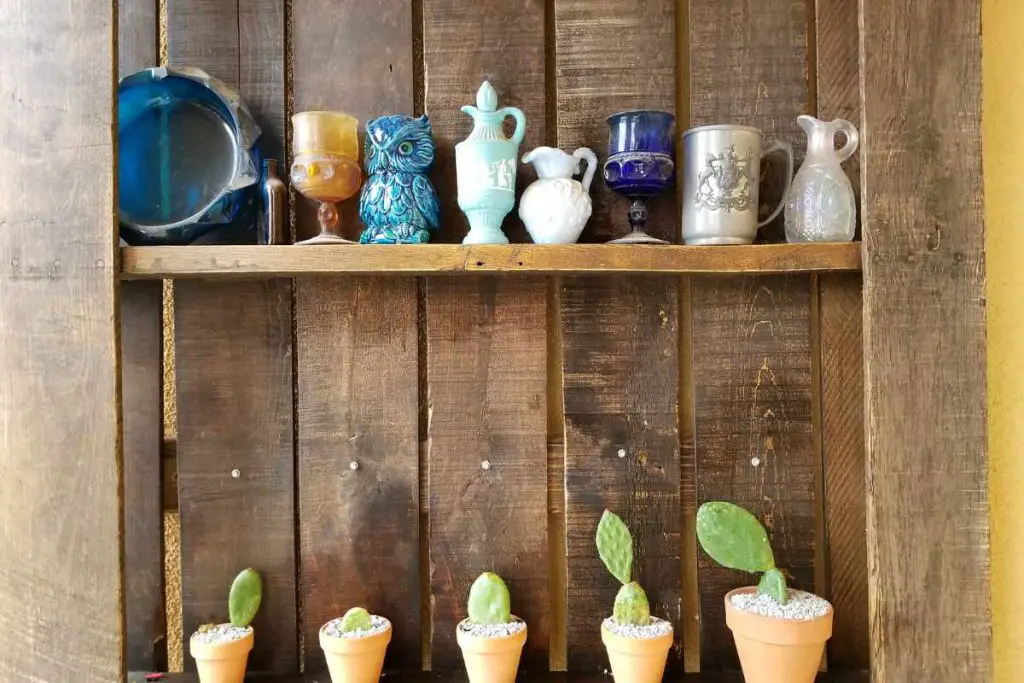
How much do I put in my potted plants?
For potted succulents, dissolve one tablespoon of Epsom salt in one gallon of water. Use this solution to water your plants once a month.
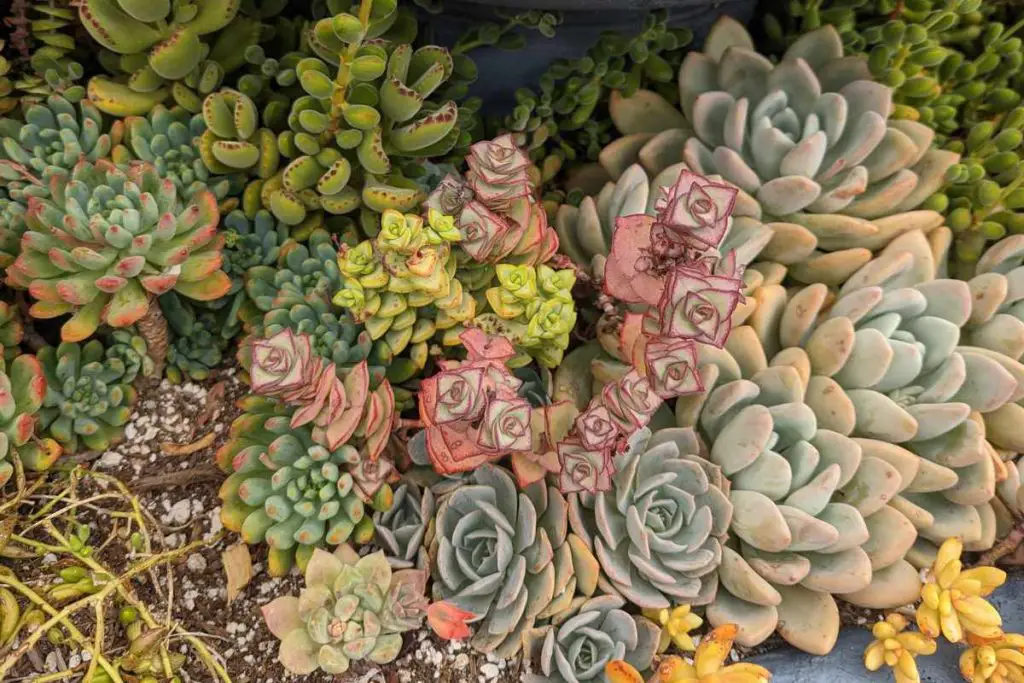
Can you use it on all indoor succulents?
Most indoor succulents can benefit from Epsom salt, but it’s essential to use it sparingly and ensure that your plants have well-draining soil to prevent salt buildup.

What is the best way to apply Epsom salt to succulents?
The best way to apply it to succulents is by dissolving it in water and using it as a liquid fertilizer. This ensures even distribution and prevents salt buildup in the soil.
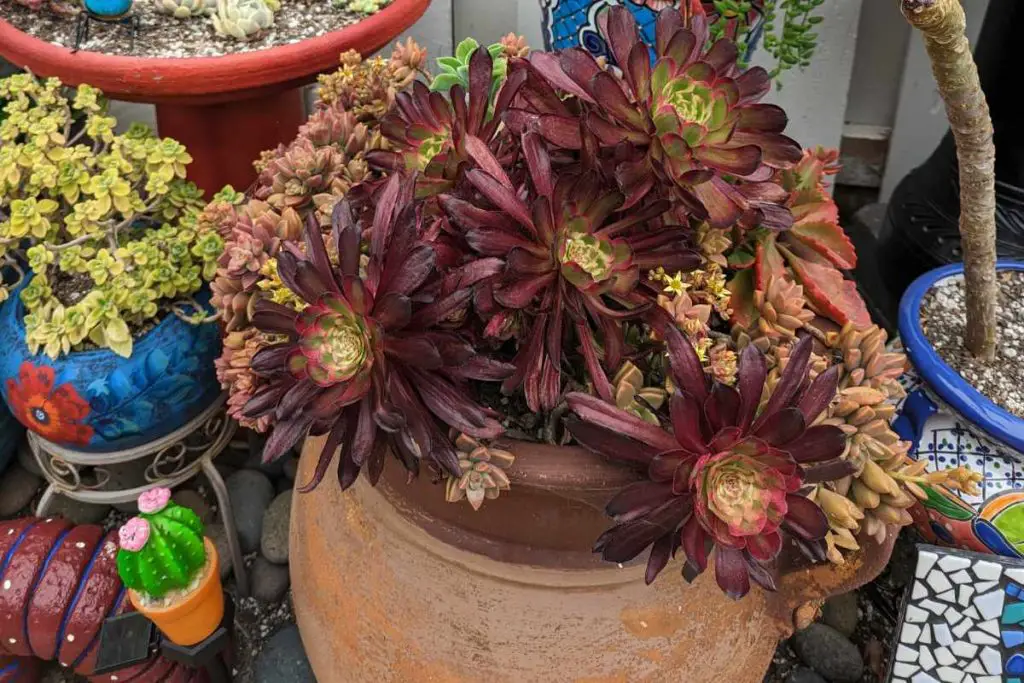
Which succulents don’t like Epsom salt?
Some succulents, such as certain cacti, may not require or benefit from Epsom salt applications. Their natural habitat is pretty low in nutrients so they’re used to the nutrient neglect. Always research your specific plants’ needs before applying any fertilizer.
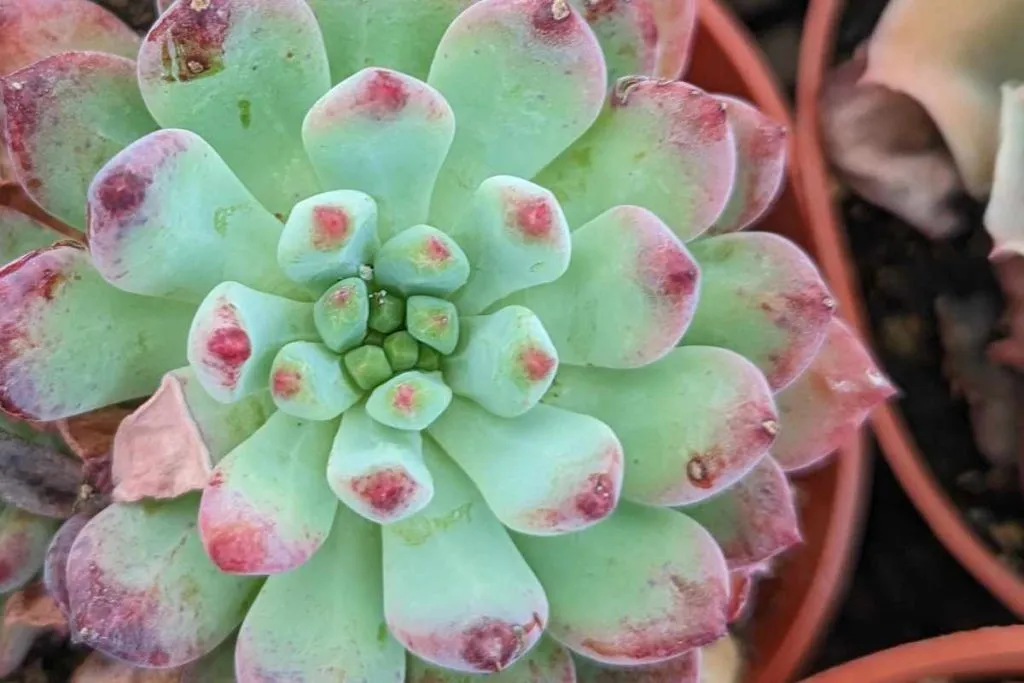
What does magnesium deficiency look like in succulents?
Magnesium deficiency in succulents can cause yellowing leaves, stunted growth, and early leaf drop. If you suspect your succulent is suffering from magnesium deficiency, you can add it to the soil to help correct the issue.
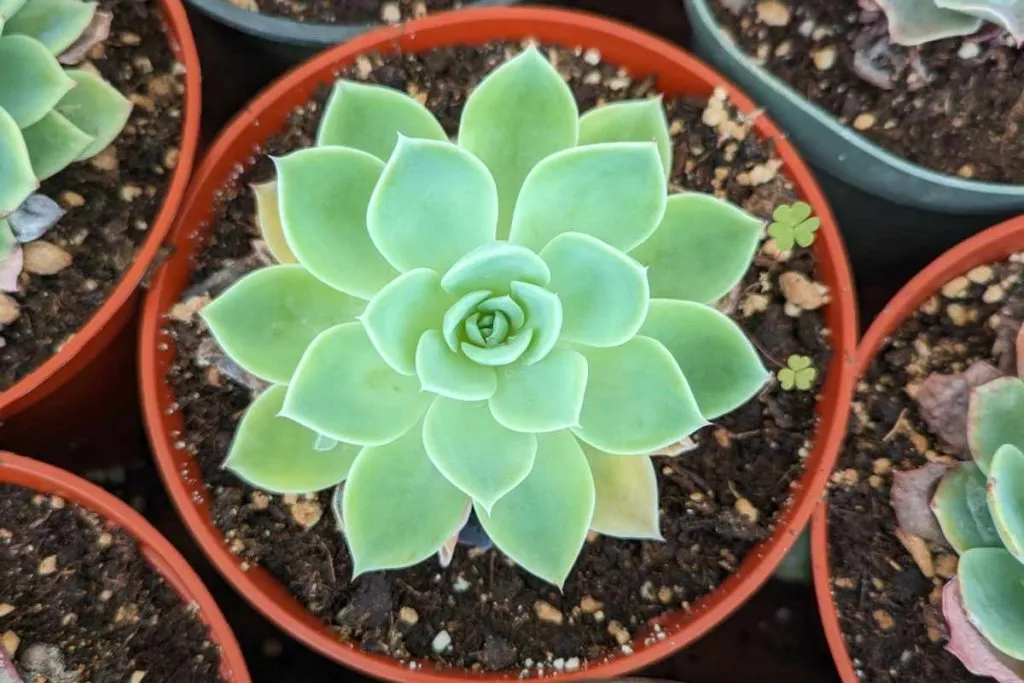
Does it correct yellow leaves?
Epsom salt can help correct yellow leaves caused by magnesium deficiencies. However, yellowing can also be caused by other factors, such as over-watering or disease, so it’s important to accurately diagnose the issue before treating it.

What happens if you put too much Epsom salt on succulents?
Using too much salt can lead to salt buildup in the soil, causing root damage and negatively affecting your succulents’ health. Always use it in moderation and according to the recommended dosage.

Does Epsom salt increase succulents growth?
Epsom salt can promote succulent growth by providing essential nutrients like magnesium and sulfur which can be depleted from the soil especially in potted succulents. However, it’s essential to use it in moderation to avoid over-fertilizing.
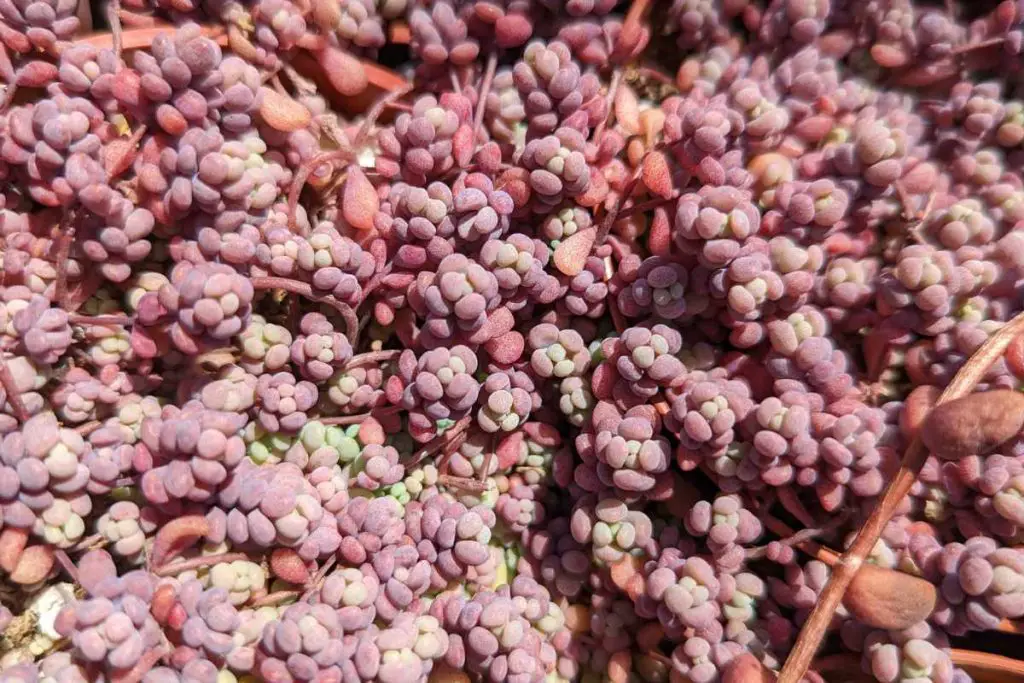
What is the ratio of Epsom salt to water for succulents?
The recommended ratio of Epsom salt to water for succulents is one tablespoon of salt per gallon of water. Dilute it even more if you’re unsure or just starting to use it with your succulents until you know how the specific species you have respond.

Should I rinse it off?
It’s not necessary to rinse off Epsom salt after applying it to your succulents. The salt will dissolve and be absorbed by the soil over time, providing your plants with the necessary nutrients. However, if you notice any buildup on the leaves of your plants, you can rinse them off with water. When you’re mixing it with your water, you can always dilute the salt solution with more water.

Liquid Epsom Salt
I recently found this jug of liquid Epsom salt on Amazon and think it would be much more convenient to apply it this way vs. diluting the salt crystals in water. This way you have a consistent dosage of magnesium going to your succulents and only need to adjust how much you dilute it with water before applying it to your succulents. As with any fertilizer, it is always better to under-fertilize than over-fertilize so there isn’t a chance of fertilizer burn. After your first application, monitor your succulents and see how they react to that initial dosage and adjust it from there.
In conclusion, using Epsom salt as a succulent fertilizer can provide many benefits, including improved growth and overall plant health. However, it’s important to use it sparingly and in conjunction with other natural fertilizers to avoid over-fertilization. By following the tips and guidelines provided, you can successfully use it to care for your succulents and keep them healthy and thriving. Remember to also address any specific care needs that your succulents may have, such as pruning and sunlight requirements, to ensure they grow thick and strong.
For some other ideas of DIY homemade succulent fertilizers, head on back to 10 DIY Succulent Fertilizer Recipes: The Ultimate Guide to Healthy Succulents
